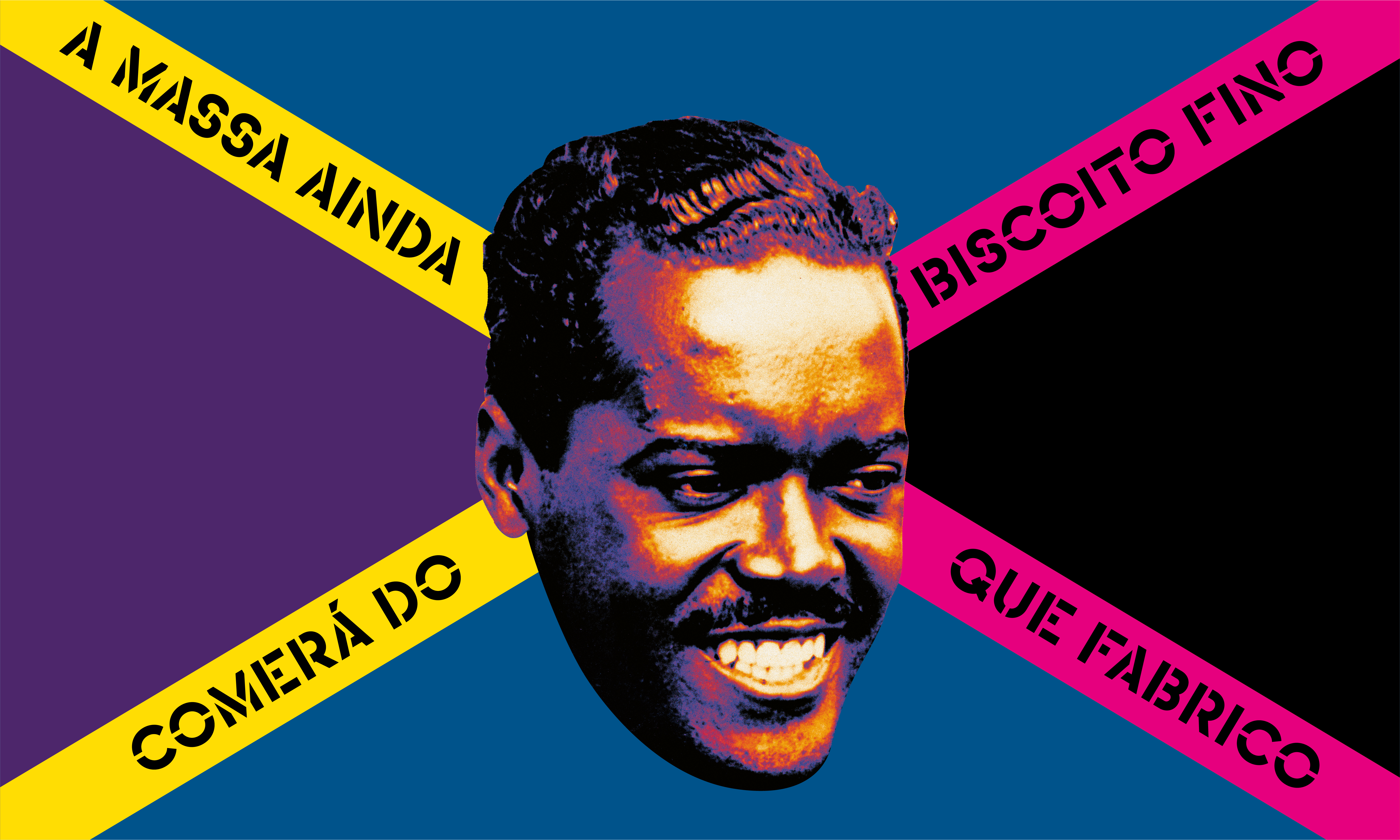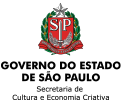TEMPORARY EXHIBITION
22 on the Field
From July 15, 2022 to January 29, 2023
What links are there between football and Modernism? This is the reflection brought about by the new temporary exhibition at the Football Museum, which shows how the artistic movement and sport were fundamental in the creation of a Brazilian identity through a multimedia and interactive experience.
Dates
July 15, 2022 to January 29, 2023
Exhibition finished
What links can be established between Modernism and football?
How can the cultural movement that sought to value an everyday Brazilian culture be linked to sport, which also came from abroad and quickly became popular in all social classes? This is one of the mottoes proposed by the new 22 on the Field [“22 em campo” exhibition. Curated by Guilherme Wisnik, the exhibition presents the sometimes unusual, sometimes surprisingly direct links between the cultural movement and the sport of the crowd

22 “players” on the field.
22 themes linking
1922 to 2022.
There are 22 modules illustrated by period photographs and videos, historical audios and others recorded by actors interpreting Modernist texts that refer to football; as well as creations made especially by designer Kiko Farkas for the exhibition’s visual identity. The set design is by Álvaro Razuk.
The ball, the goalkeeper, the player Arthur Friedenreich, the goalkeeper Marcos Carneiro de Mendonça, women’s football and the Laranjeiras stadium in Rio de Janeiro are some of the themes from the world of football. Tarsila do Amaral and Oswald de Andrade, Mário de Andrade, the Municipal Theater of São Paulo, the musician Pixinguinha and Tarsila’s canvas “Operários” (in a free translation, “Workers”) play on the Modernism and culture team. But there is more to this game than competition, and visitors will be surprised by the possible links between the two universes.
The Themes
- The ball
- Anhangabaú
- Estádio das Laranjeiras (Football Stadium, RJ)
- Marcos de Mendonça
- Arthur Friedenreich
- Pau-Brasil (Brazilwood)
- Vocabulary
- Supporters
- Operários (Workers)
- Tarsiwald
- Várzea
- Imigrants
- Favelas
- Train
- Mário de Andrade and Villa-Lobos
- Radio
- Pixinguinha
- The black man in football
- Garrincha-Macunaíma
- Indigenous football
- Women’s football
- Francisco Rebolo

“While football was spreading as a popular passion in Brazil, the practice of amateurism still prevailed, driving away athletes who needed a salary to survive. Social exclusion also implied racial exclusion. Likewise, if we look at the images of the stands at matches in the Laranjeiras Stadium at the time, we still see an elite crowd, made up of elegantly dressed white people. (…) Foreshadowed by modern art, this society made up of contradictory and disputing forces invented its own affirmative way of playing football, with the invaluable contribution of the black and indigenous populations, and many other peoples who came here.”
Guilherme Wisnik (curator)
The modernists and the ball
At the opening of the Week of 22, the writer Menotti Del Pichia quoted the player Friedenreich in his speech. Mário de Andrade dedicated a poem to the first great star of Brazilian football and, while Oswald de Andrade wrote some verses about football, the painter Tarsila do Amaral chronicled her experience as a fan at a Brazil-Argentina match in Parque Antártica.
The exhibition reflects on the relationship between the player Garrincha (1933-1983) and the character Macunaíma, created by Mário de Andrade and inspired by an indigenous entity. Known as the “angel with the crooked legs”, Garrincha was a descendant of the Fulni-ô people, from Alagoas and Pernambuco, and enchanted the world with his disconcerting dribbling and joyful way of playing – an ambiguous mixture of malice and innocence that is also present in Macunaíma.
At the end of the exhibition, visitors will be able to think about how Modernism and Football relate to the construction of the idea of “being Brazilian” – with its ambiguities, complexities and contradictions.
Vídeo
22 on the Field at the Ibero-American Design Biennial
The visual communication created by designer Kiko Farkas for the “22 on the Field” [22 em Campo] exhibition has been selected for the eighth edition of the Ibero-American Design Biennial, which takes place in November in Madrid, Spain.
Kiko’s creation for the show was inspired by the flags carried by fans to the stadiums, with collages that mix icons of modern Brazilian culture and football idols.
Galery
Technical sheet
Curatorship – Guilherme Wisnik
Curatorship assistant – Vitor Martins Cunha
Executive production and production coordination – Maira Corrêa Machado/Guapacultural
Research and texts — Bernardo Buarque e Regiane Matos Pesquisa e licenciamento – Pedro Sant’Anna
Expography – Álvaro Razuk
Team- Daniel Winnik e Ligia Zilbersztejn
Visual communication – Kiko Farkas/Máquina Estúdio
Assistant Designer – Guilherme Dorneles
Mural – Deco Farkas
Lighting design — Fernanda Carvalho/Design da Luz
Electrical design – Murilo Jarreta
Expository construction – Metro Cenografia
Voice production and audio editing – Jukebox
Actress- Neusa Romano
Actor – Pascoal da Conceição
Fine assembly – Install
Light, audio and video equipment – Maxi Audio Luz Imagem
Visual Communication printing – Watervision
Accessibility project – Incluame
Accessibility consultancy – Cristiana Melo
Textual revision – Armando Olivetti
Translations – LD Traduções
Fire protection project – Lume Consultoria
Conservation Rita Torquete
Insurance broker – Affinité
Film editing – Mira Filmes
Animations – Archimidia
Women’s Football video – Cristiano Fukuyama
Acknowledgment
André Carrijo – Memorial do Corinthians; Celso Ulzeite; César Martins; Cristiano Silva Pereira – Memorial do Corinthians; Daniel Lima; Dhaniel Cohen – Fiu Memória; Erika Corréa Cassiano; Fabiana Lima; Fabio Paulo Barbuy; Fernando Wanner – Memorial do Corinthians; Guilherme Oliveira – Allianz Parque; Gustavo Mour; Hélio Mello; Instituto Gershman; Instituto Rebolo; Jorge Wisnik; José Miguel Wisnik Leonardo Finotti; Lisbeth Rebolo – Instituto Rebolo; Lize Borba; Marcelo Duarte; Marcio Guerra; Marilia Franco; Mauricio Sabará; Patricia Lira – MIS-SP; Projeto Xingu; Raphael Rajão Ribeiro; Sergio Rebolo – Instituto Rebolo; Tarsila do Amaral; Tom Wisnik; Victor Ribeiro – Agência O Globo; Walmer Peres; Yumi Sakamoto – Selo SESC.











